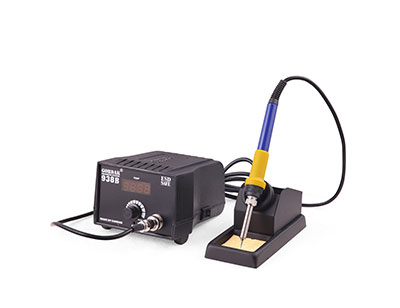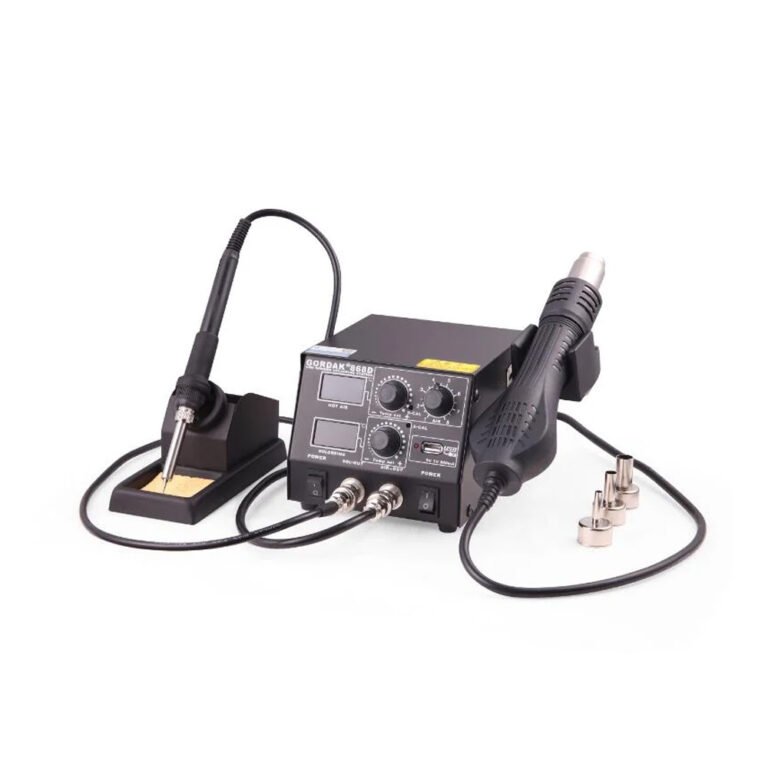A soldering iron is the backbone of every electronics repair or assembly project. Whether you are a beginner or a professional, the quality of your soldering iron can make the difference between flawless joints and frustrating results. But what exactly defines a good soldering iron? Let’s break down the key features that matter most.
1. Temperature Control
One of the most critical aspects of a good soldering iron is temperature regulation.
- Fixed-temperature irons are suitable for simple tasks but limit versatility.
- Adjustable-temperature irons or stations allow precise control, ensuring components are not overheated while providing enough heat for clean, strong joints.
Consistent temperature ensures reliability in both SMD and through-hole applications.
2. Fast Heating and Recovery
Time is valuable, especially in repair work. A quality soldering iron should:
- Heat up quickly so you can start working without long delays.
- Maintain stable performance during continuous use.
- Offer fast thermal recovery, so temperature doesn’t drop significantly when soldering larger components.
3. High-Quality Soldering Tips
The soldering tip directly affects precision and efficiency. A good soldering iron will support:
- Interchangeable tips for different applications (conical, chisel, bevel).
- Durable plating to withstand oxidation and wear.
- Easy cleaning and maintenance for long-term use.
4. Comfortable and Ergonomic Design
Soldering often requires steady hands and long working hours. A well-designed soldering iron should:
- Be lightweight to reduce hand fatigue.
- Have a heat-resistant grip for comfort and safety.
- Be balanced, making it easier to maneuver in detailed work.
5. Safety Features
Electronics work demands not only precision but also safety. Look for:
- ESD-safe design to protect sensitive electronic components.
- Insulated handles to prevent burns.
- Reliable stands and holders to keep the hot iron secure when not in use.
6. Durability and Reliability
A good soldering iron should be built to last. This includes:
- Strong materials that resist wear and tear.
- Stable power supply performance.
- Compatibility with both leaded and lead-free solder.

Conclusion
A good soldering iron is defined by precise temperature control, quick heating, durable tips, ergonomic design, safety features, and reliable performance. Investing in quality tools not only improves your soldering results but also saves time and reduces mistakes.
About GORDAK
For over 30 years, GORDAK has been a leading manufacturer of soldering and rework equipment, trusted by electronics professionals worldwide. GORDAK soldering irons and stations are known for:
- Advanced temperature control technology
- ESD-safe designs for sensitive components
- Durable construction and ergonomic comfort
- Affordable solutions with global customer support
Whether you’re working with SMD, through-hole, or advanced repair tasks, GORDAK delivers the quality and reliability you need.
Contact: info@gordakelec.com
Soldering Stations: Usage, Selection & Maintenance
What Defines a Good Soldering Iron?
A Complete Buyer’s Guide to Soldering Stations
How to Properly Use a Soldering Station
Choosing the Right Soldering Station for Your Needs
How to Choose a Quality Soldering and Rework Station
Tips for Choosing the Right Choice of Soldering Station
How To Use A Soldering Station
The Best Soldering Iron of 2024: A Comprehensive Guide
Maintaining Your Soldering Iron: Best Practices



